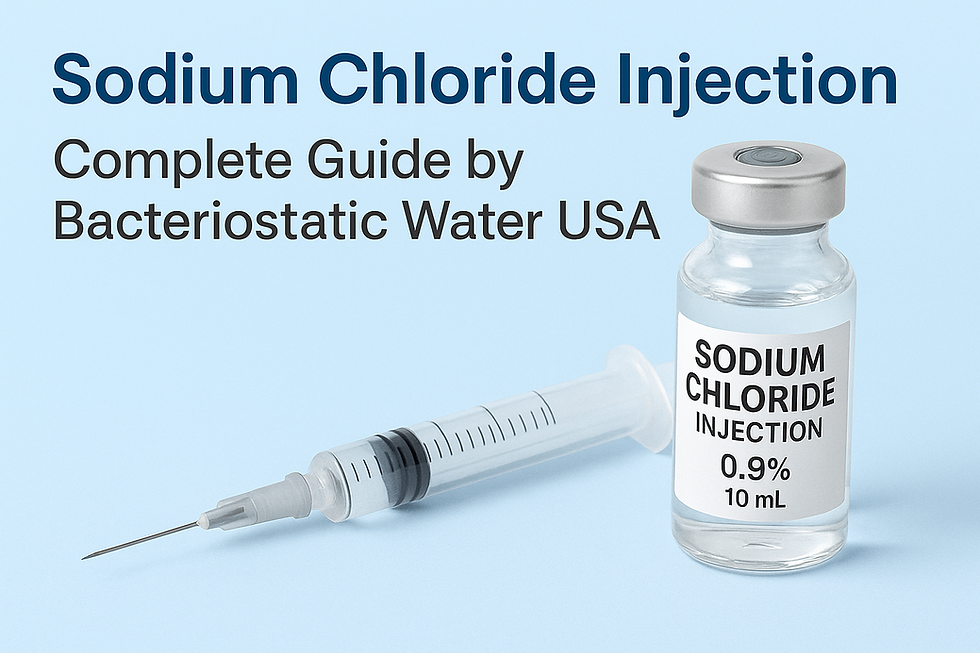Sodium Chloride Injection – Complete Guide by Bacteriostatic Water USA
- Bacteriostatic Water USA
- Aug 20
- 2 min read
Maintaining proper hydration and electrolyte balance is crucial for overall health, especially in medical settings. One of the most commonly used solutions to achieve this is sodium chloride injection, a sterile salt solution designed for safe and effective clinical use. Understanding its applications, benefits, and precautions can help patients and healthcare providers maximize its effectiveness.

What Is Sodium Chloride Injection?
This solution, typically available in isotonic (0.9%) or hypertonic (3%) concentrations, closely matches the body’s natural salt levels. The isotonic version is widely used for intravenous therapy because it supports fluid balance without disrupting cellular function. Sodium chloride injection provides essential electrolytes, helping maintain nerve function, muscle activity, and overall cellular health.
Medical Uses
Sodium chloride injections serve multiple roles in healthcare:
Fluid Replacement: Essential for patients experiencing dehydration from illness, surgery, or excessive sweating.
Electrolyte Balance: Corrects sodium deficiencies and supports vital bodily functions.
Medication Delivery: Acts as a carrier for many intravenous drugs, ensuring proper absorption and reducing injection-site irritation.
Wound Care and Irrigation: Sterile saline is used to clean wounds or surgical sites, lowering the risk of infection.
Benefits
Using sodium chloride injection offers several advantages:
Safe and Effective: Generally well-tolerated under medical supervision.
Rapid Hydration: Quickly restores fluid levels in emergency situations.
Versatile: Can be used alone or as a vehicle for medications.
Supports Recovery: Helps maintain electrolyte balance during illness or post-surgery recovery.
Administration and Dosage
Dosage depends on a patient’s age, weight, and medical condition. Intravenous administration should always be performed by trained healthcare professionals. Overuse can lead to fluid overload or electrolyte imbalance, particularly in patients with kidney or heart conditions.
Safety and Precautions
Although widely used, certain precautions are necessary:
Allergic Reactions: Rare but possible; always inform medical staff about known allergies.
Kidney or Heart Concerns: Close monitoring is needed to avoid fluid retention.
Storage: Keep in a cool, dry place and use only sterile, undamaged vials.
Side Effects
Most side effects are mild, such as minor pain or irritation at the injection site. Serious reactions, though rare, can include swelling, high blood pressure, or fluid overload. Seek immediate medical attention if severe symptoms occur.
Choosing a Reliable Source
Healthcare providers should prioritize high-quality suppliers to ensure patient safety. Trusted brands like Bacteriostatic Water USA provide pharmaceutical-grade sodium chloride injections that meet strict regulatory standards, offering reliability in clinical use.
Conclusion
Sodium chloride injections are a cornerstone of modern medical care, supporting hydration, electrolyte balance, and medication delivery. By understanding proper usage, benefits, and precautions, patients and healthcare providers can ensure safe and effective outcomes.




Comments